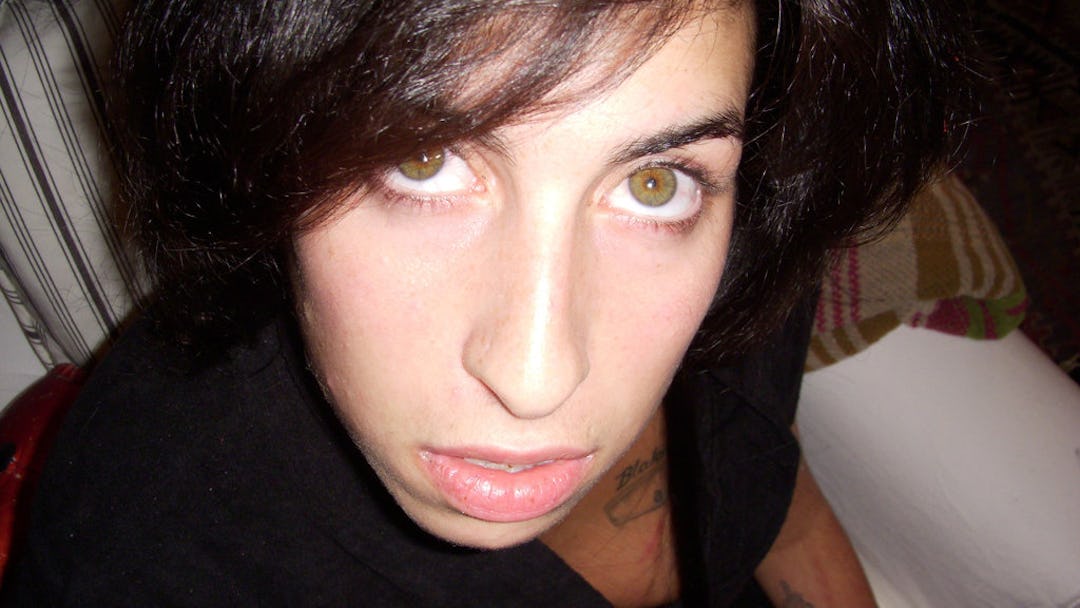The autobiographical lyrics of Amy Winehouse’s biggest hit, “Rehab,” are downright chilling in the wake of her 2011 death by alcohol poisoning. At the time of its release in late 2006, Winehouse wasn’t a big star in America, but by vividly celebrating her vices in song, Amy quickly became one of pop’s tortured greats. The line that should make your gut churn — “And if my daddy thinks I’m fine…” — alludes to Mitch Winehouse brushing off his daughter’s condition in 2005 when then-manager Nick Shymansky and others close to Amy tried to get her into rehab. The situation invites nagging “ifs,” which sit at the center of Asif Kapadia’s unflinching documentary Amy, opening in select theaters this Friday and in wide release next week.
If Winehouse had gone to rehab at that seminal point in her life, following the first of multiple break-ups with future husband Blake Fielder-Civil, crown prince of toxic romance, she may have gotten clean for good. But she wouldn’t have written “Rehab” or much of the album on which it appears, Back to Black, Shymansky suggests in Amy. In laying out this uncomfortable truth, Kapadia makes his audience question what’s more important: Amy the artist, or Amy the person?
Particularly throughout the film’s first half, viewers are introduced to a Winehouse they might not be familiar with: the young girl with a big jazz voice, who’s just realizing this poetry she’s writing could make for great material. This is not the Amy splashed all over tabloid pages in the years following Back to Black’s release, for her drug binges alongside Fielder-Civil or her bulimic frame. This is not even the Amy whose talent was celebrated by music’s old guard like the Grammys — a success she would call “really boring without drugs” to one of her oldest friends, as recounted in the film.
Through a treasure trove of candid footage shot of Winehouse throughout the ‘00s, she’s portrayed as someone who was so wanting of love, it made her susceptible to being taken advantage of. The sad reality is that Amy so intensely possessed the love of those around her, they never stopped trying to save her. But too many things were mismanaged from the start — and I mean the start. When a teenaged Amy tells her parents about a new diet trick she’d come up with — eating whatever she wants and throwing it up — her mother Janis admits in the film to thinking, “My feeling is that it would pass.”
Indeed, the Winehouse family is not portrayed in the warmest light throughout Amy, so it’s no surprise that they’ve publicly disassociated themselves from the so-called “misleading” doc. Alongside Fielder and the tabloids, Mitch Winehouse emerges as the film’s biggest villain, because he was an enabler and an opportunist. Though he was her biggest champion, it’s hard to make a case for a guy who brought a reality TV crew to St. Lucia where Amy was drying out not long before her death — particularly in comparison to a filmmaker who has been heralded by others who were close to Amy.
Kapadia spent about three years interviewing nearly 100 people who knew Winehouse in various capacities. Their audio clips are laid out atop archive footage of Amy, who feels more present throughout the film than some famous subjects still with us do in documentaries about them. The result is a heartbreaking film that asks audiences to appreciate Winehouse for her unencumbered spirit and her creative talents, to muster empathy for the disrespect she inflicts upon herself.
Amy speeds up the process of rehabbing Winehouse’s legacy, from the drug addict made the butt of cruel jokes just a few years ago, to one of music’s great lost souls. But the film takes on larger meaning beyond Winehouse’s story: consider it a compelling cautionary tale about the mishandling of self-destructive people making great art.
